Calçoene – Amazon Stonehenge And The Mysterious Amapán Megalithic Culture
Ellen Lloyd - AncientPages.com - In the distant past, people in Brazil raised fascinating megalithic structures still shrouded in mystery. One intriguing monument is Calçoene, also called the Amazon Stonehenge.
The Calzoene's 'Stonehenge' - Image credit: Leandroisola - CC BY-SA 4.0 DEED
The true purpose of this structure remains to be discovered. It could have been used as an ancient astronomical observatory or for burial purposes, or perhaps both.
Discovery Of The Amazon Stonehenge
Megalithic structures in Amapá state, Brazil, near the city of Calçoene, were first reported by naturalist Emilio Goeldi. While exploring the region, he noticed settings of upright stones in the late 19th century.
At this site, archaeologists have uncovered several fascinating artifacts that could shed more light on the mysterious Amapán people.
The Amazon Stonehenge, sometimes called the "Tropical Stonehenge," raises many baffling questions. 2005 Archaeologists began excavating the site in 2005, but a thorough study of the megalithic structures has yet to be conducted.
So far, 20 megalithic structures, eight burial caves, a mound, and some ancient villages have been discovered.
Calçoene Megalithic Structures Reveal Evidence Of Ancient Astronomical Knowledge
For the most part, Amapán megaliths are easily visible and located on the tops of hills. The stones vary much in size. The megaliths consist of upright or slanted granite blocks in circular arrangements. Some circles are small, less than 10 m in diameter.
A megalithic stone circle in Calçoene, Brazil. The site also called the Amazon Stonehenge.The largest stone structure has a diameter of more than 30 m. The granite stones are rough and straightforward. Image source: Wikipedia commons.
The stones have yet to be submitted to dating techniques, but the carbon-dating of unearthed pottery suggests the site is between 500-2,000 years old.
Studies of the Amazon Stonehenge reveal a connection between the stone structures and the Amapá culture's interest in astronomy. The Stonehenge comparison with the Amazon discovery is due to the astronomical significance of both sites.
On the winter solstice of December 21, the shortest day of the year in the northern hemisphere, the shadow of one of the blocks disappears when the sun is directly above it. The rock has been placed at an angle so that the shadow is possibly tiny throughout the day. This particular block's alignment with the December solstice leads archaeologists to consider the possibility that the site was once an astronomical observatory. During the winter solstice, the sun shines directly through this hole onto another rock for an extended time.
If the stone structure served as a megalithic observatory, then it must have been constructed by sophisticated indigenous culture.
Many of the world's indigenous peoples are thought to use the symbolism of the sky on Earth to harness the power of the celestial world. It would seem that the Amapá megalithic culture was also fascinated with the night sky and heavenly bodies.
The Amazon Stonehenge could re-write the ancient history of ancient societies in South America. Therefore, the stone circles must be studied in more detail. Scientific examinations of the archaeological sites can provide us with more clues and hopefully answers as to the age of the Amapán megalithic culture and its mysterious disappearance.
Written by Ellen Lloyd – AncientPages.com
Updated on January 16, 2024
Copyright © AncientPages.com & Ellen Lloyd All rights reserved. This material may not be published, broadcast, rewritten or redistributed in whole or part without the express written permission of AncientPages.com and Ellen Lloyd
More From Ancient Pages
-
 A Seal Impression Dated To Persian Period Discovered In The City Of David
Archaeology | Jul 3, 2020
A Seal Impression Dated To Persian Period Discovered In The City Of David
Archaeology | Jul 3, 2020 -
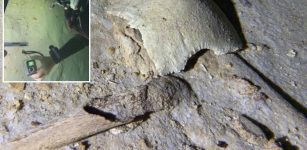 8,000 Year-Old Human Skeleton Discovered By Cave Divers Near Tulum, Mexico
Archaeology | Sep 15, 2022
8,000 Year-Old Human Skeleton Discovered By Cave Divers Near Tulum, Mexico
Archaeology | Sep 15, 2022 -
 Pryor Mountains Are Home To The Mysterious Little People – Native Americans Say
Featured Stories | Aug 2, 2021
Pryor Mountains Are Home To The Mysterious Little People – Native Americans Say
Featured Stories | Aug 2, 2021 -
 2,000-Year-Old Factory Producing Roman Fish Sauce Unearthed In Ashkelon, Israel
Archaeology | Jan 7, 2020
2,000-Year-Old Factory Producing Roman Fish Sauce Unearthed In Ashkelon, Israel
Archaeology | Jan 7, 2020 -
 Old Unexplained Mystery Of The Frightening Woman On The Isle Of Iona
Featured Stories | Mar 8, 2024
Old Unexplained Mystery Of The Frightening Woman On The Isle Of Iona
Featured Stories | Mar 8, 2024 -
 Unexpected Discovery – Medieval Monks Recorded Mysterious Volcanic Eruptions
News | Apr 6, 2023
Unexpected Discovery – Medieval Monks Recorded Mysterious Volcanic Eruptions
News | Apr 6, 2023 -
 Unique Ancient Figurine Puzzles Scientists – Was She An Unknown Pre-Historic Water Goddess?
Archaeology | Jul 21, 2022
Unique Ancient Figurine Puzzles Scientists – Was She An Unknown Pre-Historic Water Goddess?
Archaeology | Jul 21, 2022 -
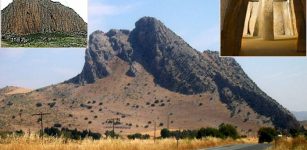 Mysterious Menga Dolmen: A New Very Old Monument Discovered
Archaeology | Sep 21, 2020
Mysterious Menga Dolmen: A New Very Old Monument Discovered
Archaeology | Sep 21, 2020 -
 Ancient Greek Costumes, Masks And Theater In Focus
Ancient Traditions And Customs | Nov 25, 2016
Ancient Greek Costumes, Masks And Theater In Focus
Ancient Traditions And Customs | Nov 25, 2016 -
 Rudra – Mighty Hindu God Of Death, Destruction, Hunting Who Heals Mortal Diseases
Featured Stories | Aug 10, 2021
Rudra – Mighty Hindu God Of Death, Destruction, Hunting Who Heals Mortal Diseases
Featured Stories | Aug 10, 2021 -
 Archaeologists And Historians Argue With Geneticists Over Controversial Viking DNA Study
Archaeology | Feb 24, 2017
Archaeologists And Historians Argue With Geneticists Over Controversial Viking DNA Study
Archaeology | Feb 24, 2017 -
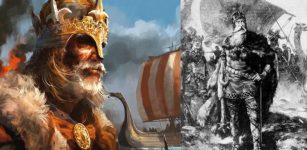 Berserkers: Icelandic Viking ‘Mad Warriors’ In The Army Of God Odin
Featured Stories | Apr 25, 2017
Berserkers: Icelandic Viking ‘Mad Warriors’ In The Army Of God Odin
Featured Stories | Apr 25, 2017 -
 Anasazi: Sophisticated Civilization That Disappeared Or Evolved Into American Indians Of Southwest
Civilizations | Dec 3, 2016
Anasazi: Sophisticated Civilization That Disappeared Or Evolved Into American Indians Of Southwest
Civilizations | Dec 3, 2016 -
 Unusual Medieval Knife Used Like An Eraser Discovered In Poland
Archaeology | Feb 16, 2018
Unusual Medieval Knife Used Like An Eraser Discovered In Poland
Archaeology | Feb 16, 2018 -
 Fossilized Remains Of A Gigantic Jurassic Pterosaur Unearthed In Oxfordshire, UK
Fossils | Jun 5, 2024
Fossilized Remains Of A Gigantic Jurassic Pterosaur Unearthed In Oxfordshire, UK
Fossils | Jun 5, 2024 -
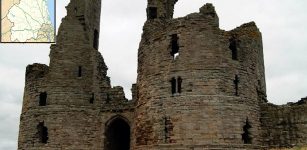 Dunstanburgh Castle: Underground Passageways And The Legend Of Sir Guy The Seeker
Featured Stories | Apr 5, 2016
Dunstanburgh Castle: Underground Passageways And The Legend Of Sir Guy The Seeker
Featured Stories | Apr 5, 2016 -
 Monte d’Accoddi – Mesopotamian Ziggurat In Europe Built By King Of Uruk?
Featured Stories | Feb 5, 2018
Monte d’Accoddi – Mesopotamian Ziggurat In Europe Built By King Of Uruk?
Featured Stories | Feb 5, 2018 -
 Non-Tobacco Plant Identified In Ancient Pipe Using New Technology
Archaeology | Jun 30, 2020
Non-Tobacco Plant Identified In Ancient Pipe Using New Technology
Archaeology | Jun 30, 2020 -
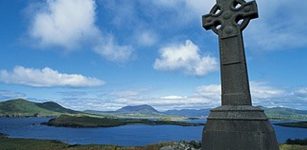 Manx: Ancient Dead Gaelic Language That Refused To Die And Has Been Revived Again
Ancient History Facts | Oct 7, 2016
Manx: Ancient Dead Gaelic Language That Refused To Die And Has Been Revived Again
Ancient History Facts | Oct 7, 2016 -
 Ancient Maya People Used Volcanic Ash To Build Pyramids When Huge Eruption Occurred
Archaeology | Sep 22, 2021
Ancient Maya People Used Volcanic Ash To Build Pyramids When Huge Eruption Occurred
Archaeology | Sep 22, 2021


